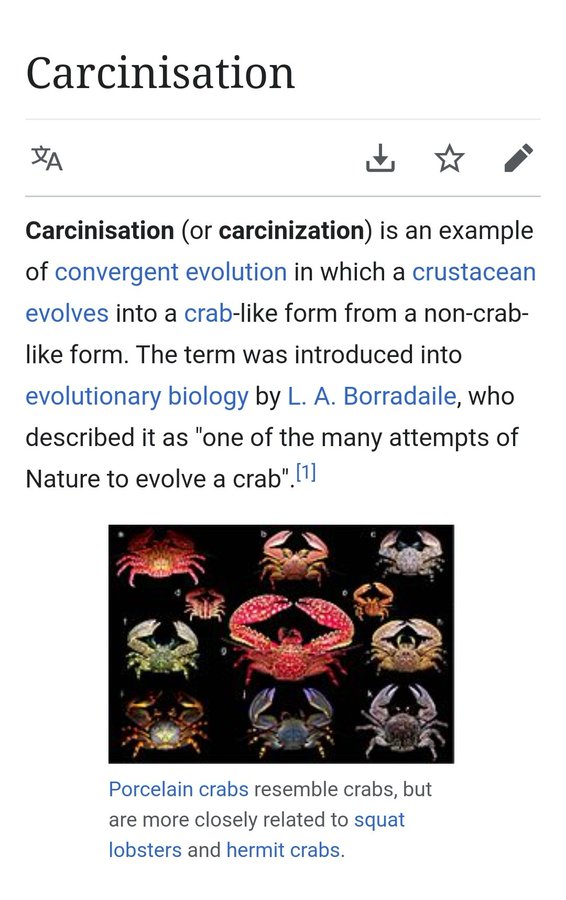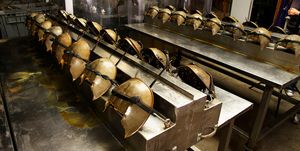It’s okay if this weirds you out.

–
–
That crabs (both “true” and ersatz) have so densely but separately evolved the same form is highly unusual, even in a world full of these examples of strong parallel and convergent evolution. “The fact that a crab-like habitus did not evolve solely in ‘true’ crabs but also several times independently in the Anomura makes this process ideal for evolutionary research,” the researchers explain.
Crabs are like Charles Darwin’s isolated Galapagos Islands groups, but they formed spontaneously instead of being evolutionarily fenced in.
It’s not just superficial shape that unifies the five evolved crab forms. The paper details neurological commonalities, shared circulatory systems, and more, while also detailing the organ and systems that differ in shape and size.
–
Moreover, the crab-shapedness of the groups can make it hard to trace what came about from interacting internal systems as opposed to, well, the crab shell:
“Some of the internal anatomical characters studied herein are structurally dependent on the external characters of a crab-like habitus. Since morphological coherence can also exist between internal anatomical structures, the coherence chains which can be traced back to the external characters of a crab-like habitus are relatively complex in some cases (indirect coherences).”
But, of course, hermit crabs don’t have a “habitus,” the biological term for a body shape or casing type that affects your health or biology context. And, the researchers say, majestic and extremely spiky king crabs evolved from hermit crabs. The crab wonders may never cease. –
–
More From Science
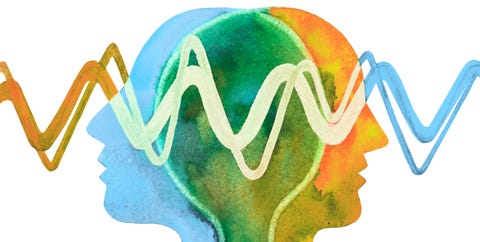
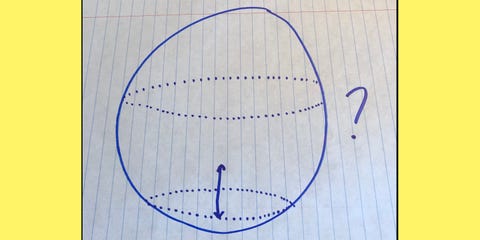
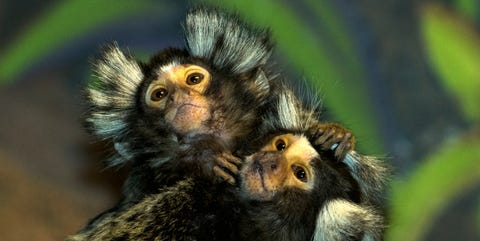


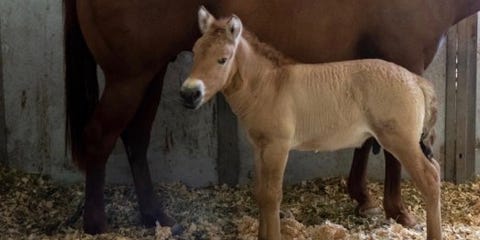




–
–









 By
By 